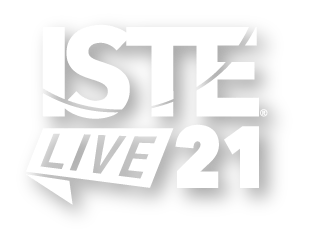

Checking All the Write Boxes: Tech Tools for Writing Across the Curriculum |
Explore and create : Creation lab
Willow Alston-Socha
Explore strategies to promote understanding and equity of voice with the utilization of technology tools for writing across the curriculum. Evaluate applications within Bloom’s Digital Taxonomy, Hattie’s HITS and DOK. Participants will leave this session with a plethora of ideas and resources to support immediate classroom implementation.
| Audience: | Coaches, Library media specialists, Teachers |
| Skill level: | Intermediate |
| Attendee devices: | Devices required |
| Attendee device specification: | Laptop: Mac, PC, Chromebook |
| Topic: | Online tools, apps & resources |
| Grade level: | 6-12 |
| Subject area: | Language arts, STEM/STEAM |
| ISTE Standards: | For Educators: Designer
Creative Communicator
|
The purpose of this session is the support teachers in the utilization of technology tools to develop students' literacy skills across the curriculum.
Participants will understand the importance of developing students literacy skills across the curriculum.
Participants will utilize the TPACK model as a means to correctly matching learning objectives with technology tool utilization.
Participants will understand how to select technology tools for both low and high-stakes writing activities.
Participants will utilize Popplet, Mirro, Thinglink, and Animoto to create an exemplar of writing-tech tool integration.
Connector and Norms - 5 minutes
The Why - Why Technology for Writing - 5 minutes
Things to Consider - Overview of the TPACK Model, Blooms Digital Taxonomy, the HITS, and DOK - 10 minutes
Tech Tool Analysis Part I - Interactive Analysis of Tech Tool Application Through TPACK Lens - 15 minutes
Task 1 - Concept Map Creation - 20 minutes
Tech Tool Analysis Part II - Interactive Analysis of Tech Tool Application Through TPACK Lens - 15 minutes
Task 2 - Storyboarding and Video Production - 20 minutes
Reflection and Evaluation - 5 minutes
What's Hot in Literacy 2020 Report https://www.literacyworldwide.org/docs/default-source/resource-documents/whatshotreport_2020_final.pdf
Churches, A. (2009). Bloom's digital taxonomy. Abgerufen unter: http://edorigami. wikispaces. com/file/view/bloom% 27s+ Digital+ taxonomy+ v3, 1.
Koehler, M. J., & Mishra, P. (2009). What is technological pedagogical content knowledge? Contemporary Issues in Technology and Teacher Education, 9(1), 60-70. Retrieved from http://scholar.google.com/scholar_url?hl=en&q=http://www.editlib.org/p/29544/article_29544.pdf&sa=X&scisig=AAGBfm2f8cIg9LIiQg0YB9Oq9vhyxC9L6A&oi=scholarr
Krathwohl, D. R. (2002). A revision of Bloom's taxonomy: An overview. Theory into practice, 41(4), 212-218.
Schrock, K. (2012). The cogs of cognitive process: Revised Bloom’s taxonomy. http://www.schrockguide.net/bloomin-apps.html
Low-Stakes Writing: Writing to Learn, Not Learning to Write | Edutopia [Web log post]. (2016, May 10). Retrieved from https://www.edutopia.org/practice/low-stakes-writing-writing-learn-not-learning-write
